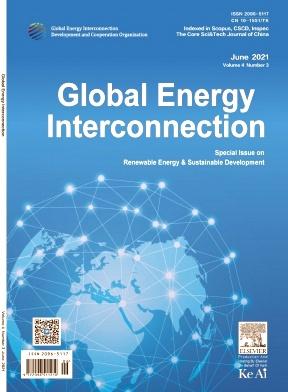新型电力系统背景下共享储能投资建设模式及价值评估研究
IF 2.6
Q4 ENERGY & FUELS
引用次数: 0
摘要
新型储能系统在推进中国能源转型的新电力系统建设中起着举足轻重的作用。《新型储能发展“十四五”规划》提出,通过自建、租赁、购买等方式推动储能设施部署,拓展投资建设模式,鼓励共享储能发展。然而,目前共享储能投资建设模式的稀缺性极大地限制了其发展,特别是成本和收益分配机制不明确,这也使潜在投资者望而却步。针对这一问题,本文提出了与现阶段储能发展相适应的共享储能投资建设模式。具体介绍了三种主要模型:(1)集中式自建共享储能模型(cses);(2)第三方投资共享储能模型(TISES);(3)分布式自建共享储能模型(dses)。对每个模型进行成本效益分析。结果表明,cses模型的内部收益率最高(11.5%),投资回收期最短,而dses模型的内部收益率为9.4%,表现尚可。相比之下,TISES模型显示出最低的内部收益率(6.7%),并且需要更高的电价才能实现。在此基础上,采用熵权法和层次分析法进行指标评价,并结合与理想解相似度排序偏好技术进行方案优化。结果表明,cses模型和dses模型的接近性得分最高。在环保法规下,这些模式通过优化储能利用率,降低用户成本,提高整体盈利能力,显示出卓越的经济效益。本文章由计算机程序翻译,如有差异,请以英文原文为准。
Study on the investment and construction models and value assessment of shared energy storage in the context of the new power system
New energy-storage systems play a pivotal role in the development of the new power system for advancing the energy transition in China. In the “14th Five-Year Plan” for the New Energy-Storage Development, it is proposed to expand investment and construction models by promoting the deployment of energy-storage facilities through the ways of self-construction, leasing, and purchasing, and to encourage the development of the shared energy-storage. However, the current scarcity in the model of the shared energy-storage investment and construction substantially restricts its development, particularly due to unclear mechanisms for cost and benefit allocation, which also discourages potential investors. To address the issue, this paper proposes investment and construction models for shared energy-storage that aligns with the present stage of energy storage development. In specific, three main models are introduced: (1) Centralized Self-built Shared Energy-Storage model (CSSES), (2) Third-party Investment Shared Energy-Storage model (TISES), and (3) Distributed Self-built Shared Energy Storage (DSSES) model. The cost–benefit analysis is conducted for each model. The results indicate that the CSSES model achieves the highest internal rate of return (11.5%) and the shortest payback period, while the DSSES model performs acceptable with an IRR of 9.4%. In contrast, the TISES model shows the lowest IRR (6.7%) and requires higher electricity price for being feasible. Furthermore, the study employs the entropy weight method and the analytic hierarchy process (AHP) for indicator evaluation, and integrates the technique for order preference by the similarity to an ideal solution (TOPSIS) for scheme optimization. The results show that both the CSSES model and the DSSES model achieve the highest proximity scores. Under environmental regulations, these models demonstrate superior economic benefits by optimizing energy storage utilization, reducing user costs, and enhancing overall profitability.
求助全文
通过发布文献求助,成功后即可免费获取论文全文。
去求助
来源期刊

Global Energy Interconnection
Engineering-Automotive Engineering
CiteScore
5.70
自引率
0.00%
发文量
985
审稿时长
15 weeks
 求助内容:
求助内容: 应助结果提醒方式:
应助结果提醒方式:


